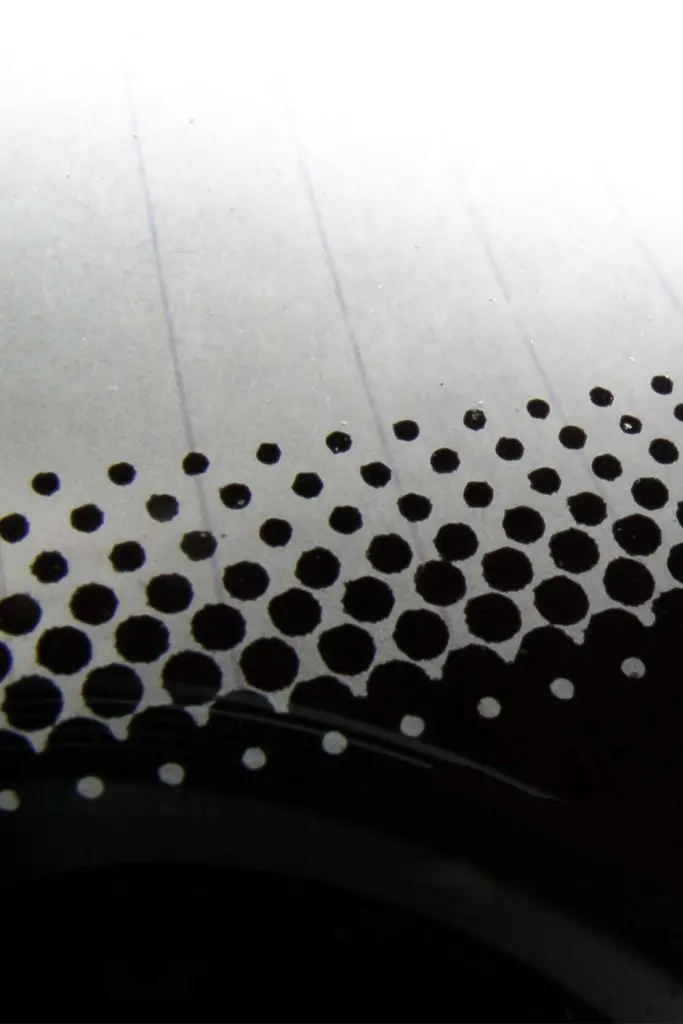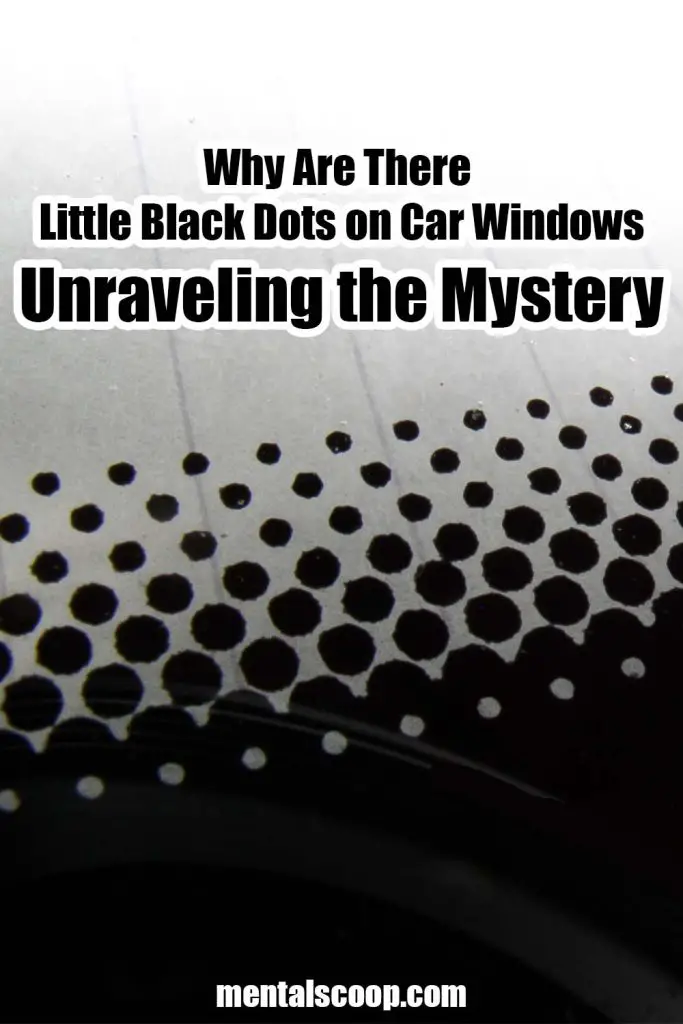Why Are There Little Black Dots on Car Windows: Unraveling the Mystery

When you take a closer look at your car windows, you might notice a peculiar pattern of tiny black dots on the glass. These little black dots are more than just a random design element; they serve a specific purpose and are an essential component of modern car windows. In this article, we will delve into the reasons behind the presence of these black dots and how they contribute to the safety and functionality of your vehicle.
Automotive Glass Manufacturing Process
To understand the origins of the black dots on car windows, we must first explore the manufacturing process. Automotive glass undergoes a tempering process that enhances its strength and safety. During this process, the glass is heated and rapidly cooled, creating tension and compression on its surface. The little black dots are an outcome of this manufacturing method.
Role of the Black Dots in Tempered Glass
The black dots are strategically placed around the edges of the car window. These dots act as indicators of the tempered area of the glass. As tempered glass is designed to break into tiny, less sharp pieces upon impact, the presence of the black dots allows the driver and passengers to identify the areas that are more likely to shatter in the event of an accident.
UV Radiation Protection
Another vital function of the black dots is their ability to absorb and block harmful UV radiation. The sun’s ultraviolet rays can cause damage to your skin and eyes, as well as to the car’s interior. The black dots help mitigate this risk by serving as a protective layer against UV rays, ensuring a safer and more comfortable driving experience.
Enhancing Structural Integrity
Car windows are subject to various forces during driving, such as wind pressure, vibrations, and road impacts. The black dots play a role in distributing these forces evenly across the glass surface, enhancing the structural integrity of the window. This feature contributes to the overall safety and durability of the vehicle.
Defogging and Demisting
In cold weather conditions, car windows can fog up due to temperature variations inside and outside the vehicle. The black dots on the windows assist in preventing excessive fogging and demisting the glass faster. They achieve this by disrupting the formation of water droplets and ensuring better visibility for the driver.
Noise Reduction
Modern cars are designed to provide a quiet and comfortable ride. The little black dots contribute to noise reduction by acting as additional dampeners, absorbing and reducing vibrations and external sounds that may enter the cabin. This results in a quieter and more peaceful driving experience.
Concealing Adhesive and Hardware
Car windows are attached to the vehicle using adhesive, and there are various hardware components involved in the installation. The black dots serve a cosmetic purpose by effectively concealing these adhesives and hardware, giving the window a cleaner and more polished appearance.
UV Curing Process for Adhesive Bonding
During the installation process, the black dots play a crucial role in the UV curing process. UV-curable adhesives are often used to bond the glass to the vehicle’s frame. The black dots are specially designed to block UV rays from curing the adhesive in specific areas, ensuring a controlled and precise bonding process.
Preventing Edge Corrosion
The edges of car windows are susceptible to corrosion and damage over time. The black dots act as a barrier, preventing moisture and other external elements from seeping into the edges and causing corrosion. This protection helps extend the lifespan of the car windows.
Minimizing Glare and Reflections
Glare and reflections from sunlight can impair a driver’s vision, leading to potential hazards on the road. The little black dots on car windows help minimize glare and reflections, offering improved visibility and reducing eye strain while driving.
Aesthetic Appeal and Privacy
In addition to their functional benefits, the black dots also enhance the aesthetic appeal of car windows. They add a sleek, modern touch to the vehicle’s design. Furthermore, the dots provide a degree of privacy by partially concealing the interior of the car from outside view.
Compliance with Safety Standards
Lastly, the inclusion of the black dots on car windows is essential for meeting safety standards and regulations set by various automotive authorities worldwide. These standards ensure that car manufacturers provide safe and reliable vehicles to consumers.

More interesting articles you may be interested in reading:

How To Remove A Tree Stump Painlessly
10 Vital Home Maintenance Tasks You’ll Regret If You Forget
See How Much Propane Is Left In A Tank With No Gauge
Thanks for reading and be sure to share this info with your friends using the social share buttons below.
Talking about social stuff, consider liking our Facebook page to keep up to date with our articles. Check out our other articles for more mental scoops!
